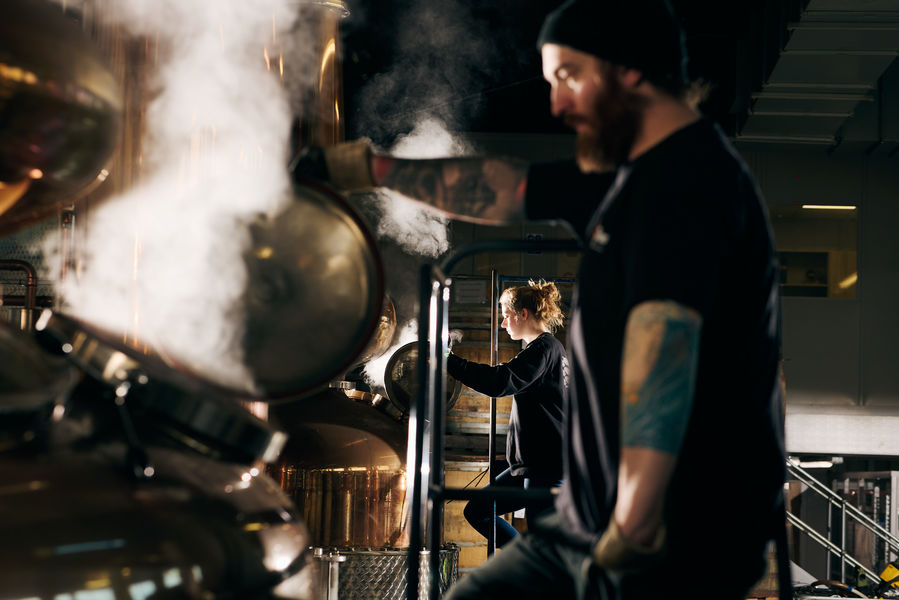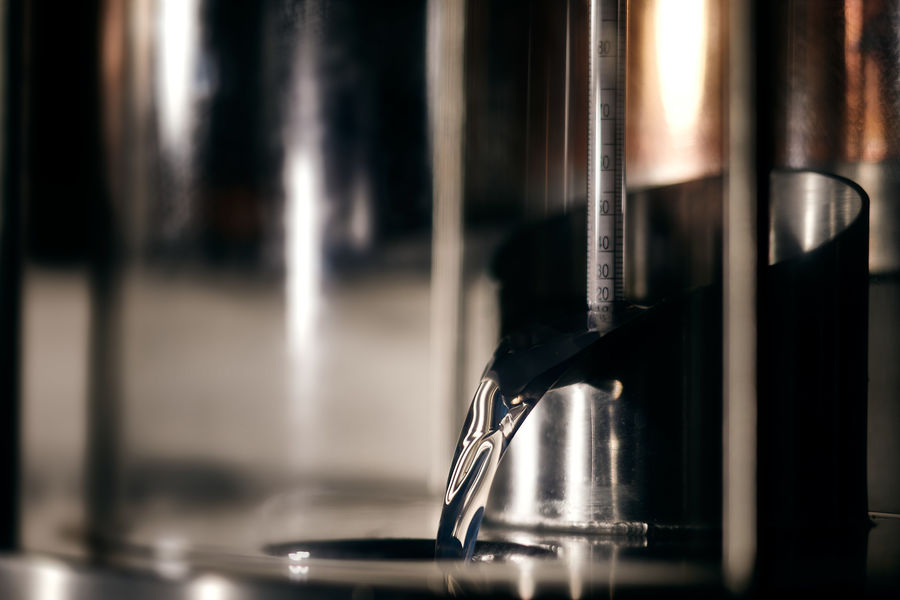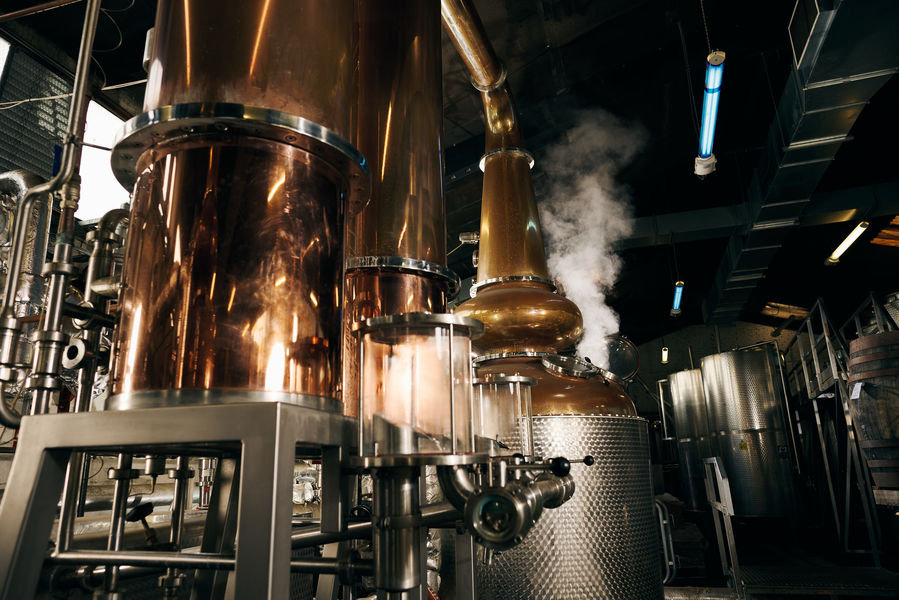
Our Whisky Making Process
The Glasgow Distillery, home of Glasgow 1770 Single Malt Scotch Whisky.
We are a team of 16, producing quality award-winning spirits that are enjoyed all around the world.
Bringing our distillery to you, here is our whisky-making process, step by step.
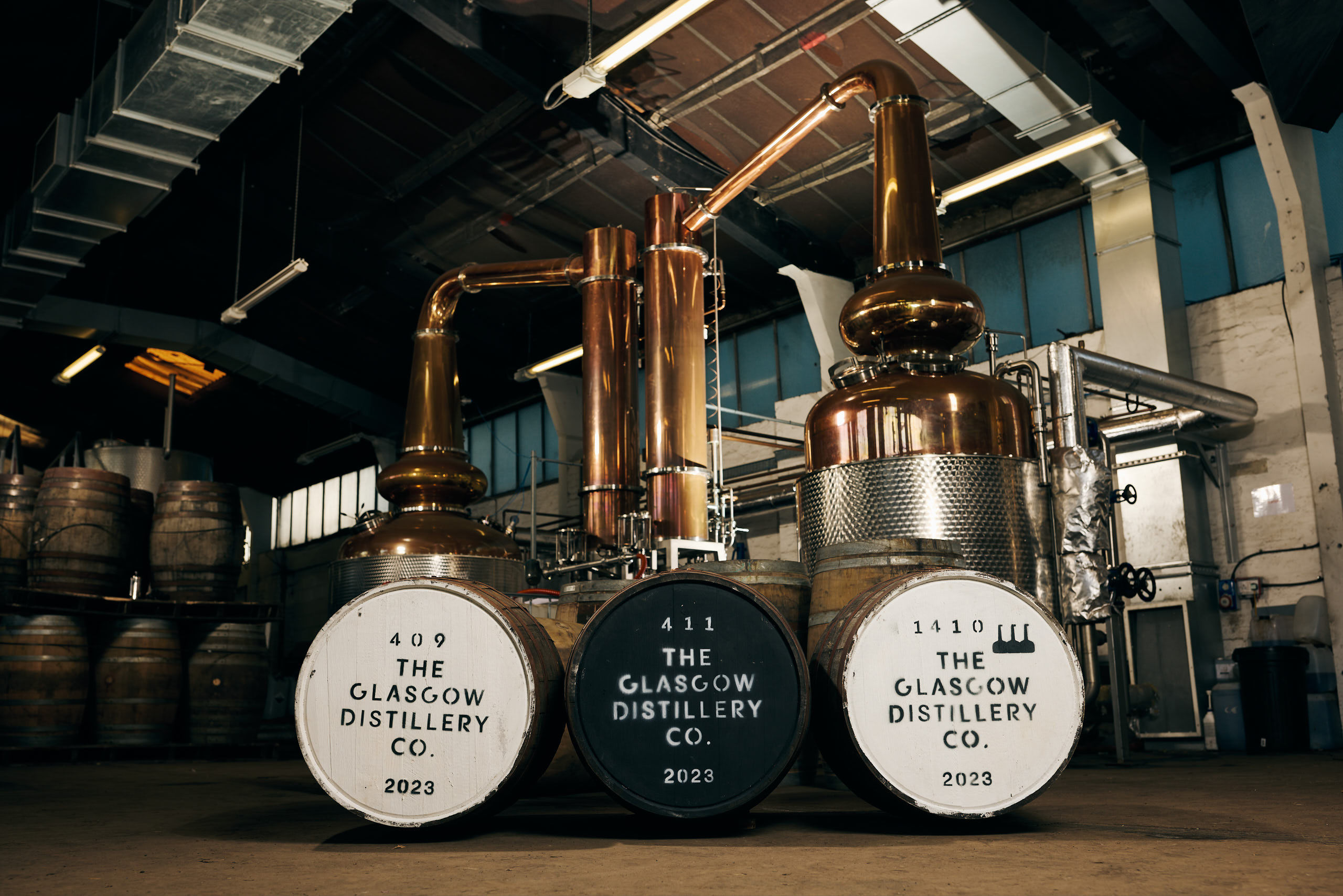
using unpeated malted barley
using peated malted barley
using unpeated malted barley
At The Glasgow Distillery, we split our whisky production year into three distinct periods.
By creating three different styles of new make spirit, we create three very different flavour profiles. These profiles are the foundation upon which we release our range of single malt whiskies; giving us a wide spectrum of flavours to choose from for our whisky portfolio each year.
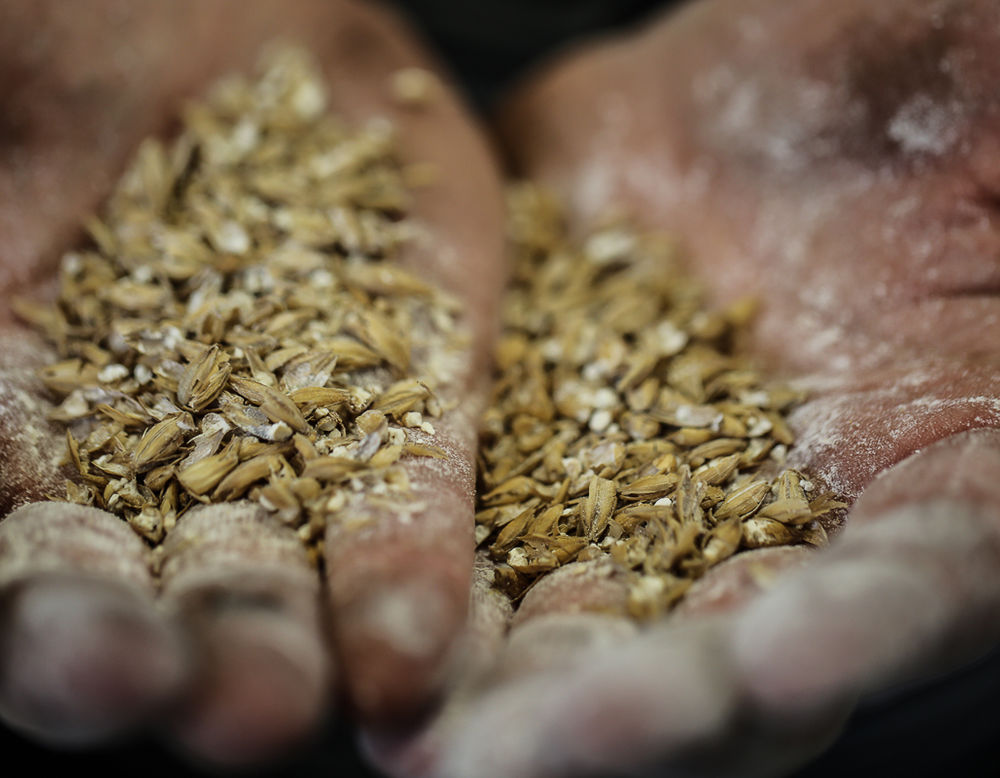
Our Barley
There are three raw materials that we need for making single malt scotch whisky: malted barley, water and yeast.
We source our barley from selected maltsters across Scotland and the UK. The strain of barley that is delivered is carefully selected by our malting partners to give the best quality spirit.
To turn barley into malt ready for whisky production the maltster soaks the barley grains in warm water for a couple of days to encourage starch to develop within the grain. Once the barley begins to sprout, the germination is halted by drying the grains out with the use of either hot air or peat smoke.
When we’re distilling our peated spirit, the malted barley we use has been dried over peat smoke to around 50ppm (phenol parts per million) using mainland peat sourced from heather-rich grounds for aromatic and sweet flavours of smoke.
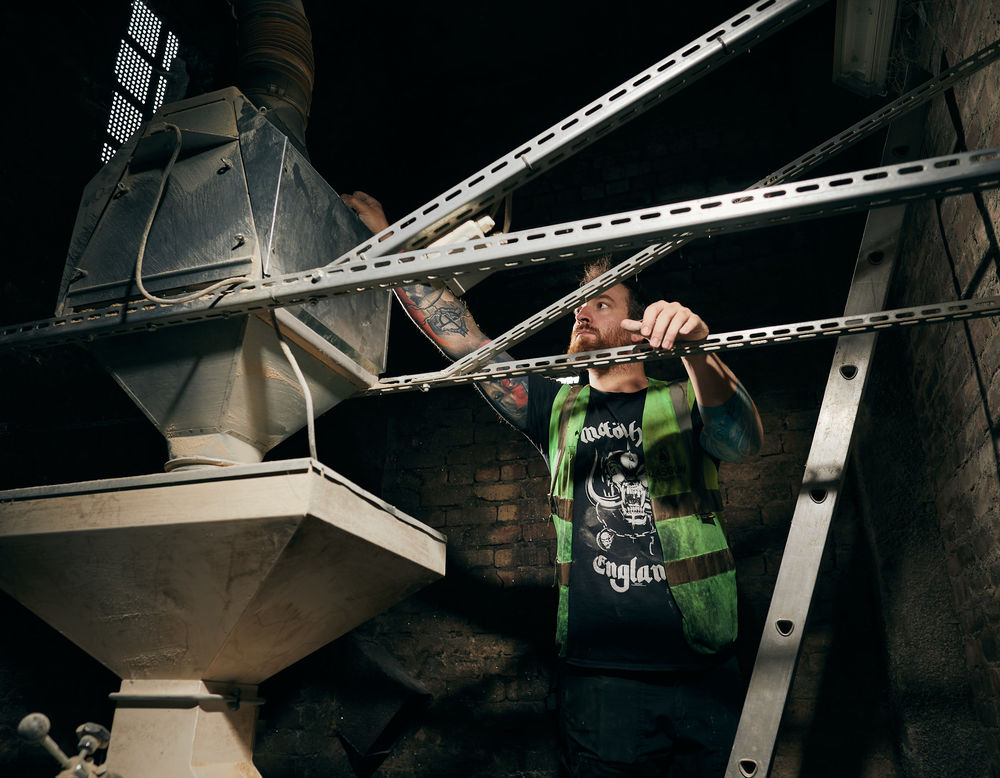
Milling
Once our malted barley has been delivered, the first part of its journey at the distillery is to be turned into grist. We do this by pushing the grain through a two-roller mill. The mill crushes the malt into three elements: husks, grit, and flour.
We analyse the grist through a sieve at the top of the mill where we can collect samples to determine the ratio of husk, grist and flour ensuring it’s suitable for us to work with.
Mashing
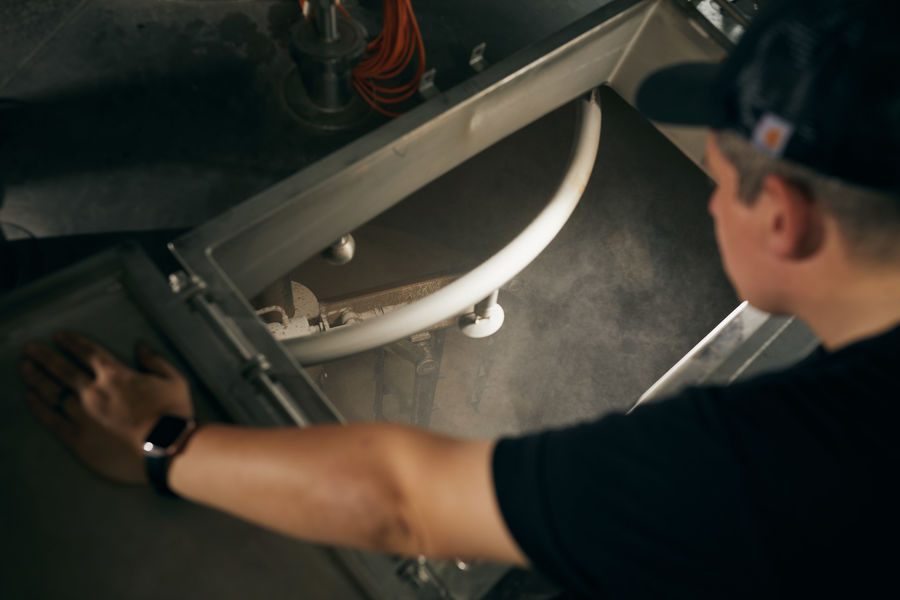
One ton at a time, we move our freshly milled grist through to our mash tun. As we add our grist, we pump water into the mash tun where the two elements meet in mid-air before filling the tun using a total of 9000 litres of water. Our mash tun is a stainless steel semi-lauter tun that features internal rotating rakes and a false floor bed.
The water that is added turns the starchy insides of the malt into soluble sugars that later in the process are turned into alcohol. To ensure we’re getting as much sugar as we can from the grist, the water is added at three different stages, increasing the temperatures of the water at each stage: 70 degrees, 80 degrees and the third and final water at 85 degrees Celsius.
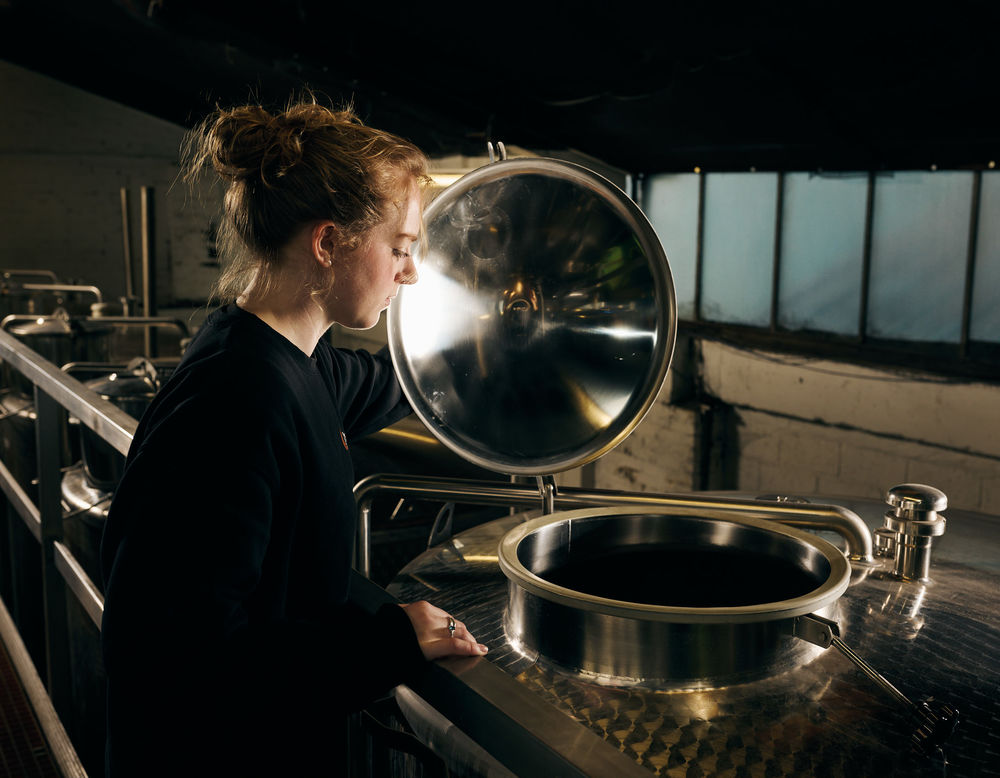
Fermentation
The next step of our process is fermentation, which happens in fermentation vessels (FVs) or ‘washbacks’. As we produce three very different styles of spirit, we use stainless steel washbacks to ensure a deep clean is possible between each style. For example, after the use of peated malt, our washbacks are thoroughly cleaned to ensure no smokey phenol notes are present when we run unpeated malt.
We have seven washbacks that we fill with 5000 litres of wort from the mash tun. This wort has been cooled to around 30 degrees where we then add our distillers' Pinnacle yeast.
Traditionally, the yeast is left to ferment for around 48-60 hours however we leave the yeast for a minimum of 72 hours to pack in as much flavour as we can before the distillation process begins. The yeast eats away at the sugary wort and produces heat, carbon dioxide and alcohol – at the end of the fermentation, our wash, also known as ‘distiller’s beer’, sits with an alcohol percentage of around 8% ABV.
Distillation
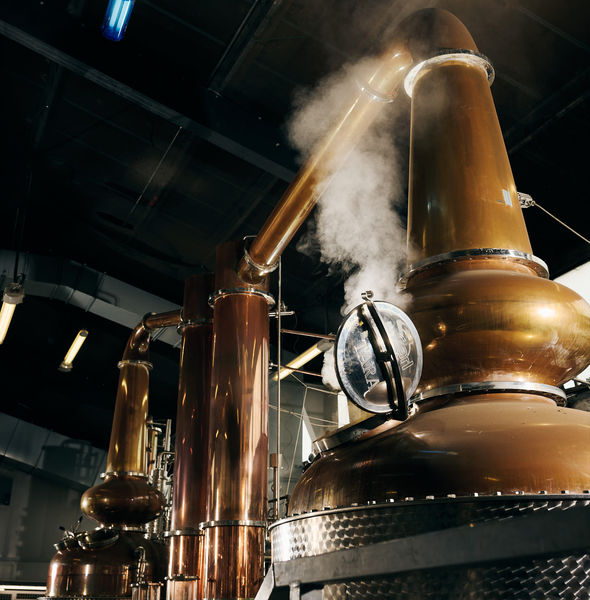
Once fermented, the distillation process comes into play.
The 8% ABV wash is split equally into our two 2500 litre Wash Stills; these stills are named Tara and Margaret. Tara is our original Wash Still (installed in 2014) and is named after one of our founders' daughters.
Margaret, an identical replica of Tara that was installed in 2019 as part of expanding our production capacity, is named after Margaret Macdonald Mackintosh the influential artist known for her work with metal and for helping to create the iconic Glasgow Style alongside her sister, Francis. Margaret married Charles Rennie Mackintosh and the two, alongside Margaret's sister Frances and her husband Herbert Mcnair were known as 'The Glasgow Four'.
Within our Wash Stills our wort is distilled slowly over 6 hours to create a 20-25% ABV spirit known as the Low Wines.
Maturation
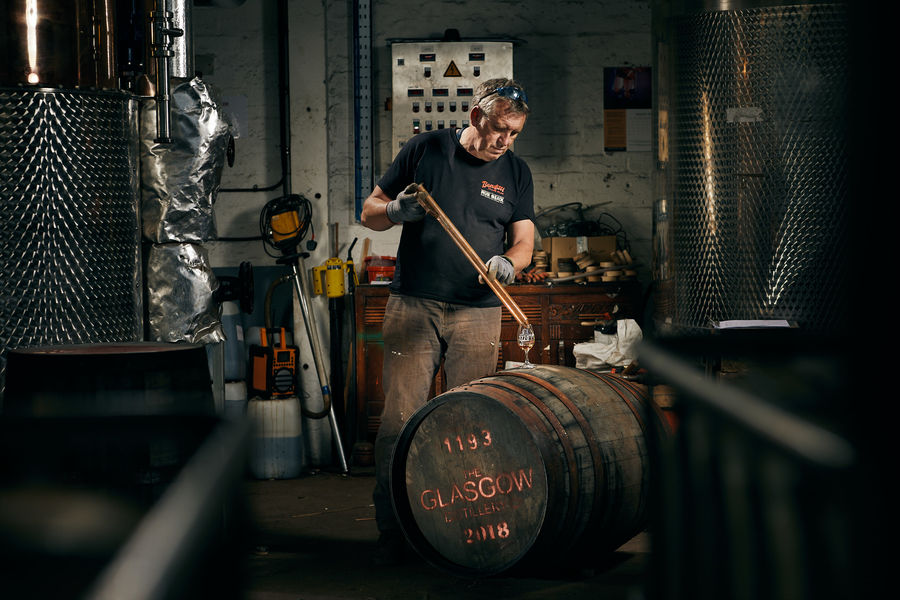
Now that we have our new make spirit, we move onto the final part of the process: maturation.
We combine our hearts into our spirit tank, where roughly one week’s production is combined at any one time. Within the spirit tank, we bring the alcohol percentage of the new make spirit down to 63.5% ABV which is the strength we will fill our casks at.
The majority of our unpeated spirit, both double and triple distilled, is filled into casks which have previously held Bourbon, which come to us from various well know producers from the USA.
The majority of our peated spirit is filled directly into virgin American white oak barrels, shipped to us from Kelvin Cooperage. Kelvin Cooperage was set up in the 60's on the banks of the river Kelvin that runs through the heart of Glasgow. In the 90s they relocated to Kentucky to be closer to the Bourbon and wine industry. We’re proud to be bringing their quality craftmanship back to the city the Cooperage originally called home.
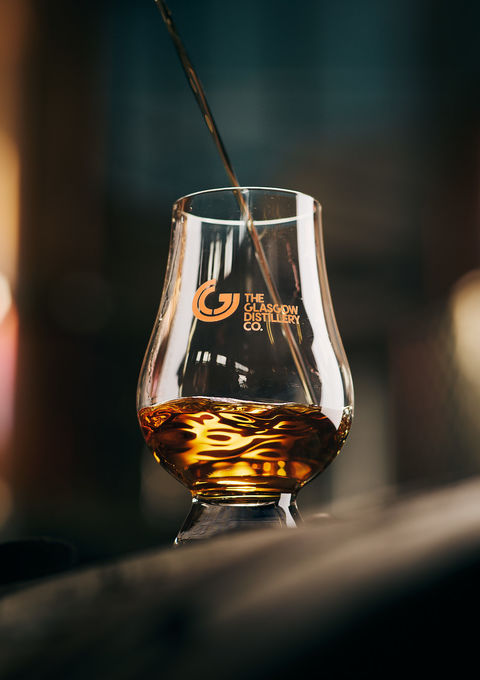
Bottling
From here, our whisky is maturing and developing flavour. After three years in cask, the spirit is now legally single malt scotch whisky, and we can choose to bottle it or keep it maturing for longer.
Each year we are tasting a wide variety of our casks and select the very best to be bottled and released. Each and every cask that is bottled is first sampled and undergoes a rigorous sensory analysis program by our whisky making team before being approved for bottling. It's from these casks that we develop and grow our Glasgow 1770 Single Malt Signature Range: The Original, Peated and Triple Distilled, alongside the limited-edition programme of Small Batch Series releases and single casks.
Highlights
Production team size: 7 distillers, 1 cooper - all full-time
Water source: Loch Katrine
Average PPM of malt: 0ppm for unpeated / 50ppm for peated
Peat source: Highlands
Mill type: Roller mill
Mash tun type: Semi-lauter
Batch size: 1 tonne
Washbacks / Fermenters: 8x stainless steel, charged to 5000 litres
Fermentation Time: 72 hours minimum
Number of stills: 4
Wash still capacity: 2,500 litres
Spirit still capacity: 1,500 litres
Cut points: Triple Distilled 75%, Unpeated 63%, Peated 57%
Cask filling strength: 63.5%


